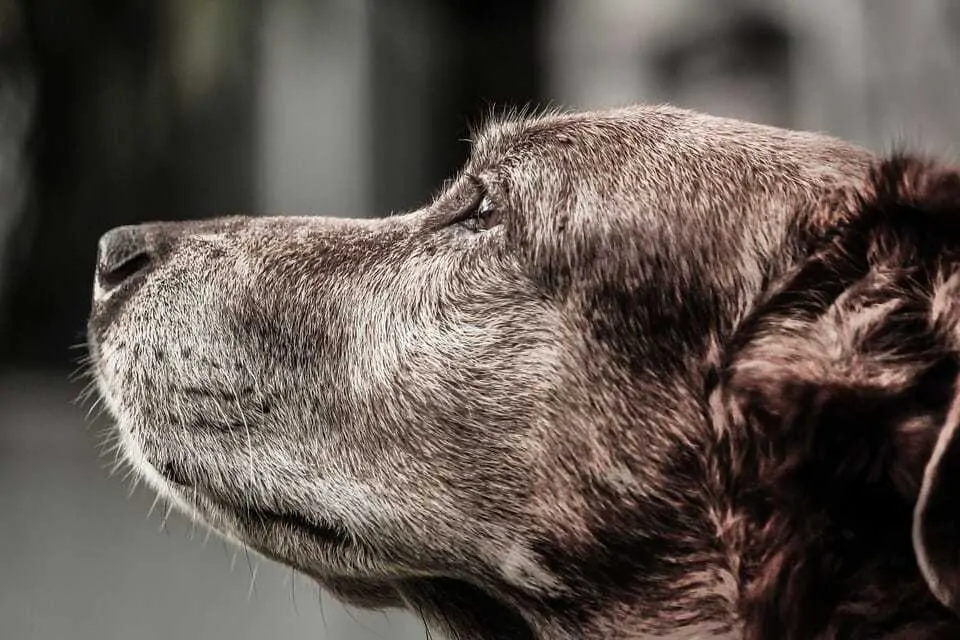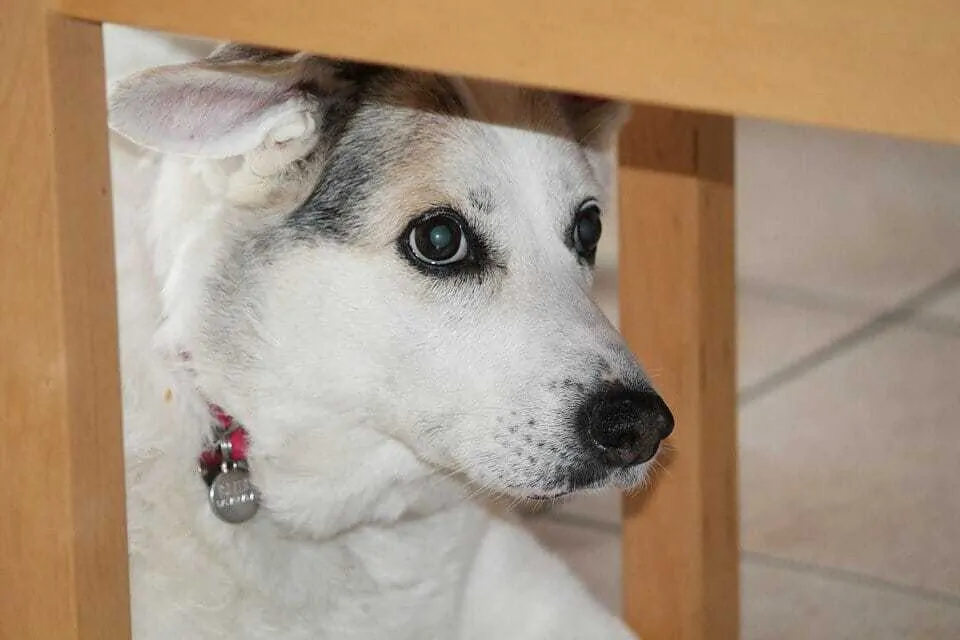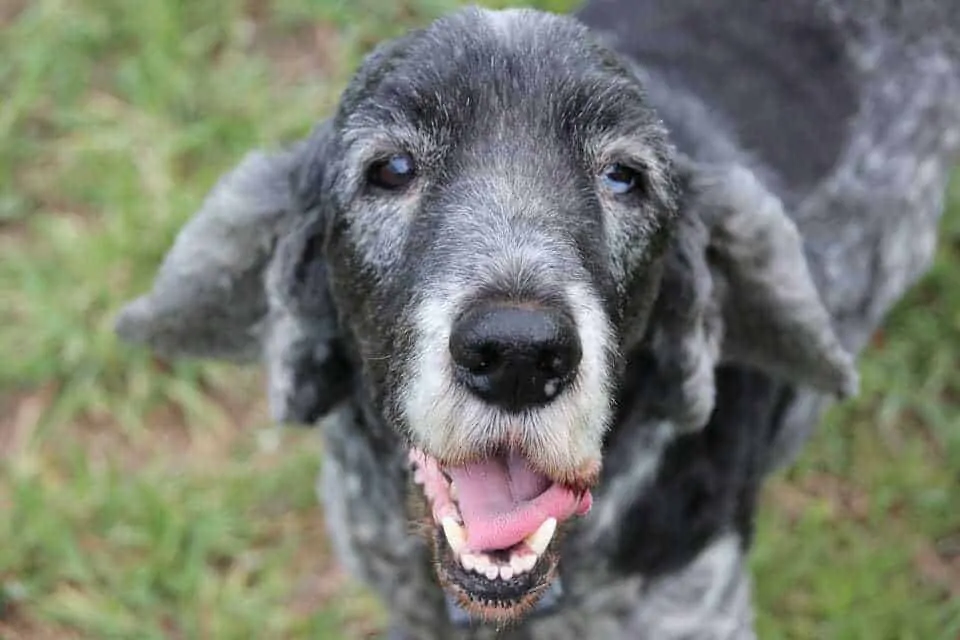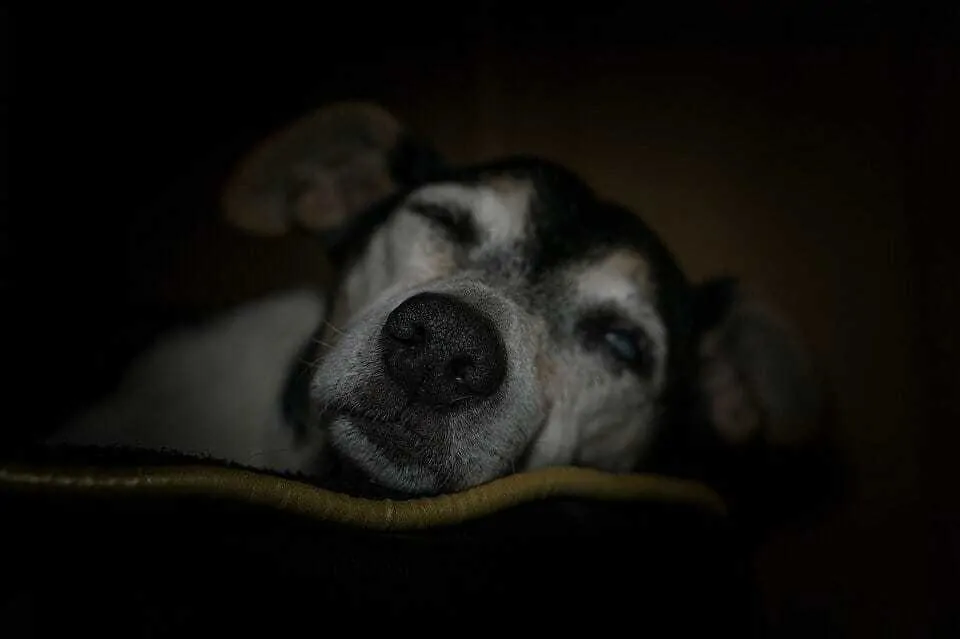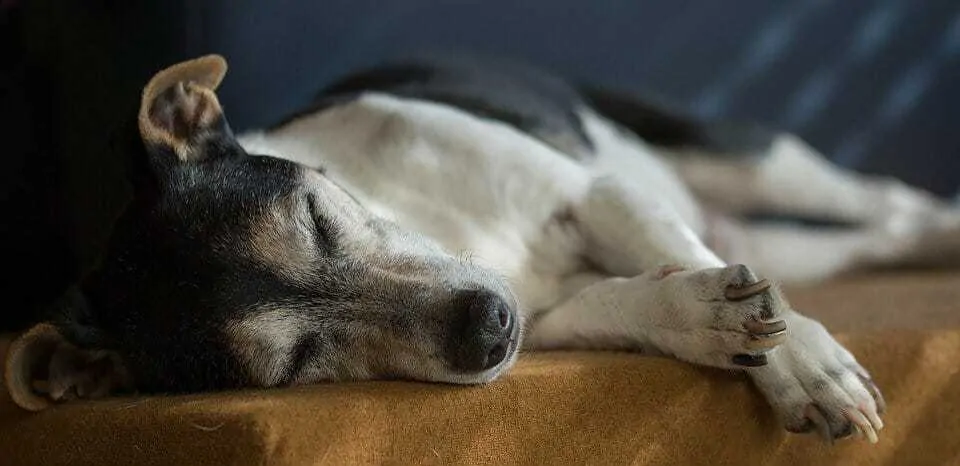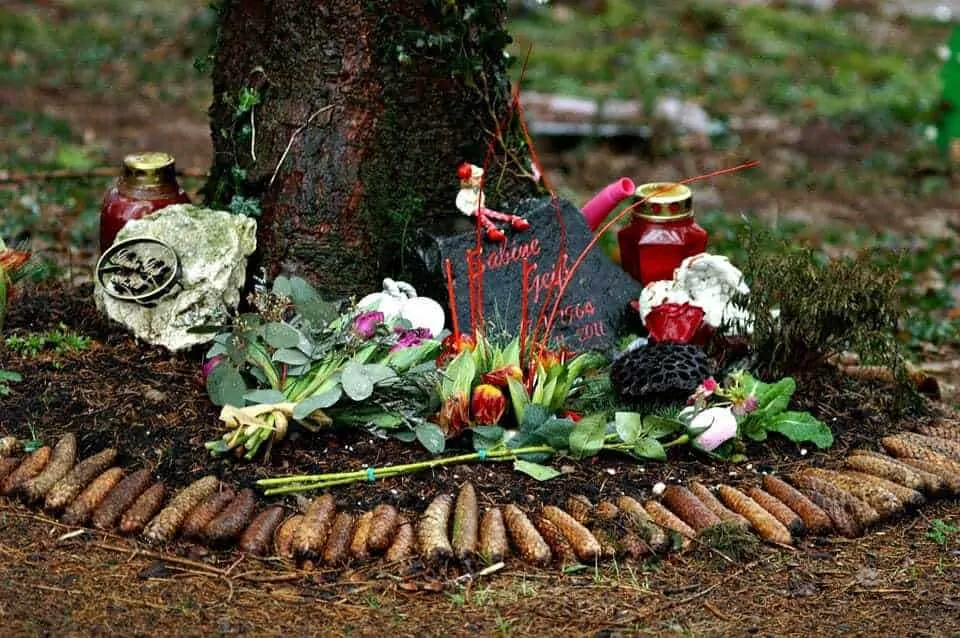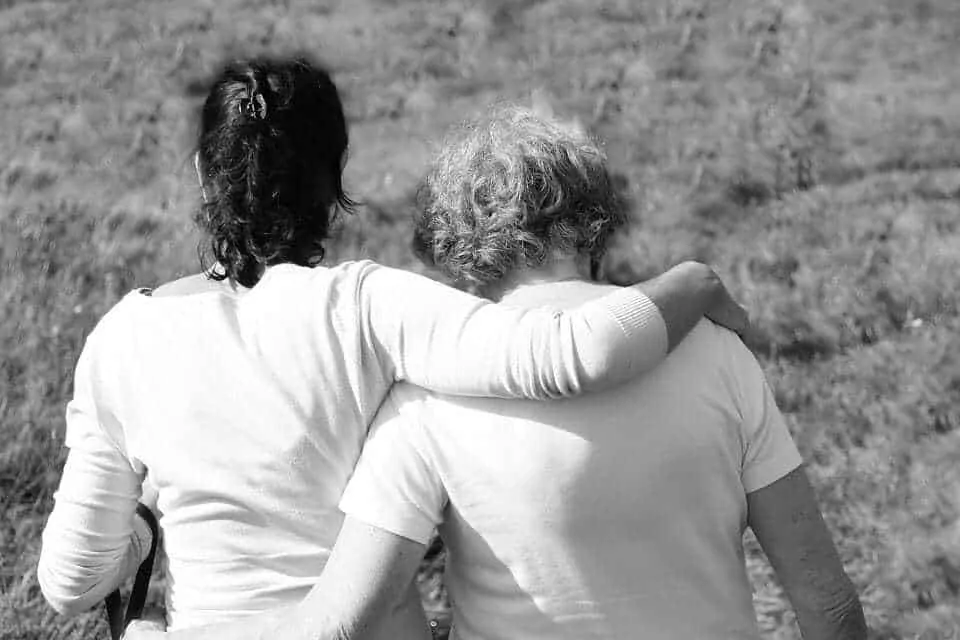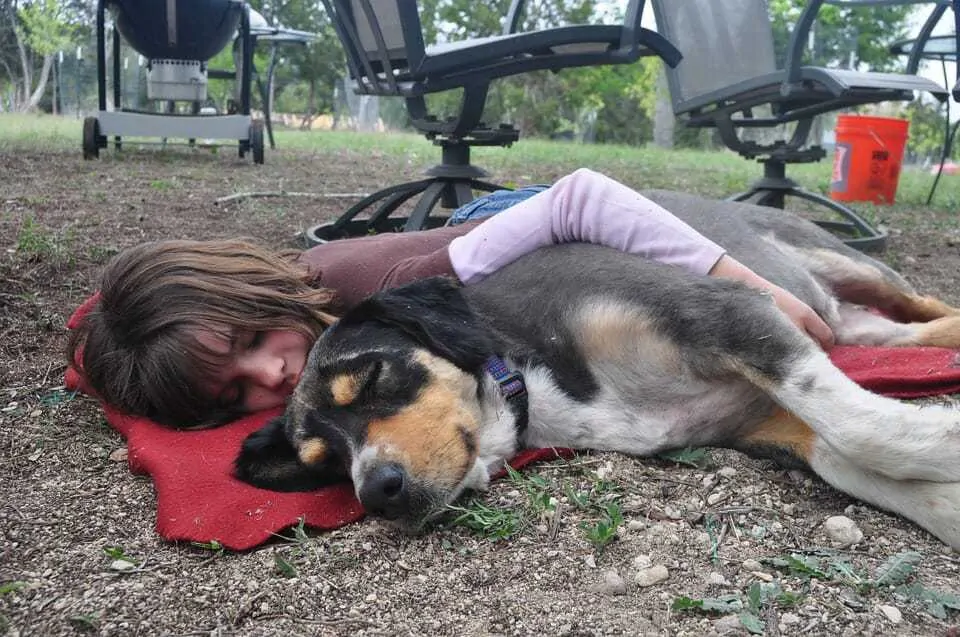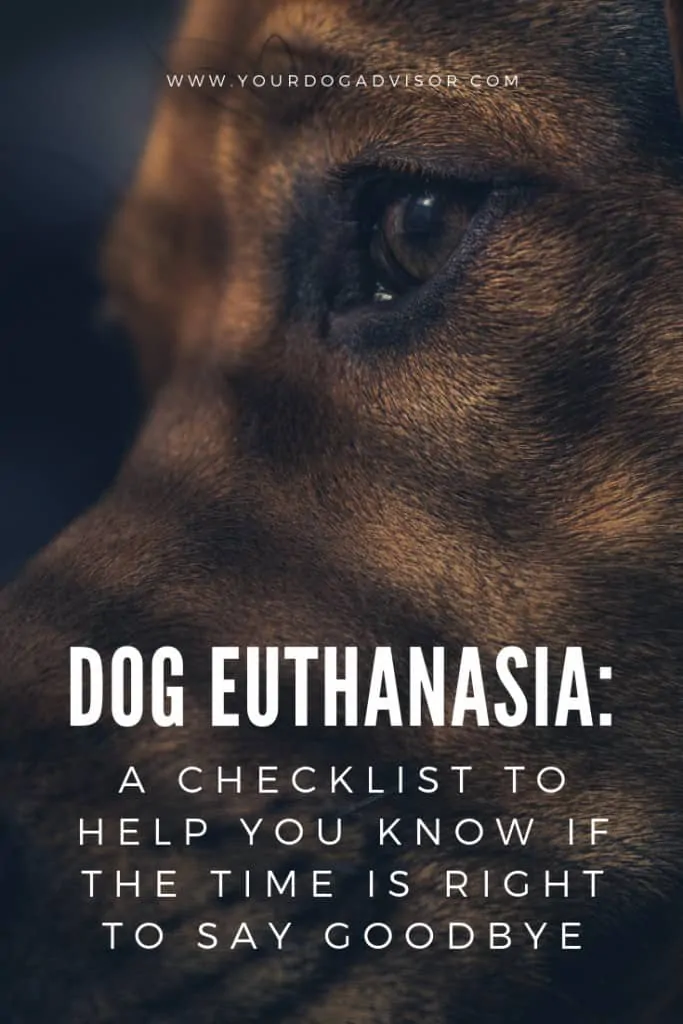While we would all love our dogs to live to a ripe old age and then drift away peacefully in their sleep in the comfort of their own home, it is important to remember that a natural death for many dogs would result in drawn-out suffering and stress. Sometimes, despite our desires, owners may be faced with considering our dog’s quality of life and when it could be the right time to say goodbye.
Contents
How Do You Know It is the Right Time?
Many vets will tell you that this is a question they are asked by the owners of ailing or ageing dogs most frequently. They are also often asked, “What would you do?”.
They are not really questions they can answer for you, but they can help guide you with making a more rational and informed decision in terms of providing you with the medical facts. The key consideration is your dog’s overall quality of life. While some dogs may be suffering from a disease or age-related illness where they could live for a number of months or even years more, if this time is spent in pain and discomfort then this is when it is usually time to think about helping them pass with dignity before this point arrives.
It can be extremely difficult when you have so many strong emotions to see things clearly and rationally, and sometimes having a focal point and extra guidance can be extremely useful to help you make a more objective decision that is based on the well being of your dog, rather than your own desire to hold onto them.
While these guidelines can be very useful and some of the decision will be based on fact, some of it also relates to the bond you have with your dog, you know them and their behaviours and often there will be a gut feeling telling you when the time is right too.
Facing the decision of euthanasia for your beloved dog can be the most difficult part of pet ownership
Is Their Ailment Treatable?
The first thing to establish is whether the pain or discomfort your dog is in is treatable and manageable. Perhaps they have elderly arthritis and this can be managed with pain relief and anti-inflammatories, if they have had a cancer diagnosis there may still be non-invasive treatments that are worth pursuing. Sometimes these treatments can offer a cure or provide your dog with enough relief that their quality of life improves dramatically.
For conditions that are not treatable or are progressive (like canine dementia), then close monitoring will be required to ensure that your dog is continuing to have a good quality of life. If they have persistent pain, are struggling to eat, have frequent vomiting and/or diarrhoea, or serious difficulties in breathing, then these are indications that euthanasia may need to be considered.
For progressive conditions that will result in a quickly deteriorating quality of life, some owners (in discussion with their vet) will make a decision to say goodbye before their dog reaches a more severe stage of suffering, feeling that a little too early is better than too late.
While it is an individual decision, predicated on individual circumstances, the key is ensuring that your dog is not left in prolonged suffering.
It is also important to consider the emotional and financial strain a chronic condition can place on you and your family too. Some owners find it more difficult to cope with than others and if your situation, financial or otherwise, does not allow you to give the dog a good enough quality of life then euthanasia may be the kinder option, sooner rather than later.
Is Your Dog in Pain?
For some owners, it can be difficult to tell if their dog is in pain. They are much more stoic creatures than humans and they can tolerate a great deal of pain before they would begin to howl or whine as a result.
There can be subtle signs to look out for including:
- Changes in your dog’s behaviour; perhaps they have become more withdrawn, more likely to growl or snap, or less keen to play or receive attention
- A loss of appetite can often be as a result of pain
- Dogs in pain can be more restless, unable to get comfortable or find it difficult to sleep well
- Is your dog’s breathing laboured or much faster than normal? Dogs in pain will often pant, even when they are not too hot.
- Your dog’s body language can tell you a lot. Their tail may be tucked under, they may be walking in a hunched manner
- A dog that is in pain may tolerate contact less well. When once they enjoyed a cuddle or tummy rub, they may now growl or move away.
Looking out for the subtle signs of pain is important. Is your dog shying away from contact when they usually seek it out?
Does Your Dog Still Enjoy Their Favourite Things?
If your dog is no longer showing any enthusiasm for the things they once did then this can also be a sign their quality of life is being impacted. Perhaps they no longer get excited about a daily walk. Maybe they no longer give a joyous welcome home to their beloved family members. They may no longer want to eat their favourite treat of roast chicken or peanut butter. Perhaps they no longer recognise their family members or become confused and disorientated.
Dr. Villalobos’ Quality of Life Scale
Dr Alice Villalobos is a renowned Oncology Veterinarian who has developed a Quality of Life Scale that can aid owners struggling to get a proper perspective on their dog’s condition. It is also referred to as the HHHHMM Scale.
The Scale asks owners to score their dog’s quality of life, from 0 to 10 (with 10 being the best quality of life), in seven different areas:
Hurt looks at pain levels. Hunger looks at whether the dog is able to eat and get enough nourishment. Hydration looks at whether the dog is getting sufficient water intake. Hygiene deals with whether the animal is able to groom or be groomed, is developing sores, suffering from incontinence etc. Happiness looks at whether the dog is responsive, depressed, wants to interact or play. Mobility looks at whether the dog is able to get up unassisted, are they happy to go out for a walk. The final one is More Good Days Than Bad, and if the bad days outnumber the good then this is one that should not be ignored.
Dr Villalobos suggests that if the score is above 35 points then the dog has a chance of maintaining a good enough quality of life. Of course, this checklist is just an indicator and it should be used alongside discussions with your vet rather than in isolation.
Is your dog having more good days than bad where they still enjoy walks and seem happy and comfortable?
Saying Goodbye
If the decision has been made to say goodbye to your dog, depending on the circumstances, there may be an opportunity to spend a last day or week with them just enjoying their company and allowing them to enjoy and appreciate their favourite things.
Again it is important to weigh up whether prolonging the event is the right thing for your dog though.
Sometimes even just giving young children or family members that may not be present at the euthanasia some quiet and calm time to say their goodbyes can be important too. For children, this may be their first experience in dealing with death and the grieving process and it can be difficult knowing the best way to deal with the situation. Explaining the decision and preparing them in advance for the loss, if possible, is always best. The book ‘When a Pet Dies’ by Fred Rogers is a popular choice for parents to use if they are at a loss for how to explain things themselves.
There is no absolute right or wrong way to handle this, it will depend on the individuals and the situation.
Sometimes a dog will be under anaesthetic when it is realised the situation is grave and it may be kinder to let them slip away peacefully (even if not getting an opportunity to say goodbye makes it more difficult for you).
At Home or at the Vet?
While most euthanasias are handled at a veterinary surgery, it is becoming more common for an at home euthanasia service to be offered.
This can mean that it is a less stressful passing for your pet, particularly if they are frightened of visiting the vet.
It can also mean that they can be surrounded by the people that love them and it can be a more private and personal option.
There is no absolute right or wrong decision. Sometimes at home appointments have to be booked in advance and, if your dog takes a sudden turn for the worse, then going to the vet immediately may be required.
If it is possible, an at home euthanasia can be a more peaceful passing for your dog where they are surrounded by familiar comforts and those that love them
How Does Euthanasia Work?
Some people may not feel they need or want to know the details of how the euthanasia works but, for others, it can be a comfort to understand what is happening and to avoid any surprises in what is a very emotionally distressing time.
Your vet will explain how the process will work and will ask you to sign any relevant paperwork in advance of the procedure. Don’t be afraid to ask any questions you may have at this point, no matter how trivial you may think they are. If you want some extra quiet time with your pet be sure to ask for this too.
Usually, the dog will be on the exam table or on the floor, depending on their size. You may want to have a familiar blanket or towel for them to be placed in. If you want to be holding your dog it is important to discuss this with your vet in advance as they need to be confident that the process goes smoothly for your pet and this is often seen as more possible with trained staff. Don’t be afraid to talk to your pet through the process, this can be comforting for you both.
If you have a dog that is agitated or nervous at the vet then it may be better for your dog to receive a sedative before the euthanasia begins. This is much easier to administer and it will mean that your dog will be unconscious quickly before the final step is underway. This usually takes about 5 or 10 minutes to take full effect.
Your dog will then receive a lethal dose of an anaesthetic drug, usually sodium pentobarbital, into their front leg and this will cause your dog to become quickly unconscious, usually within just a few seconds, before their heart rate slows down completely and then stops within just a few minutes or less.
Your vet will then check that the heart has stopped and confirm your dog’s passing.
It is not unusual for your dog to have some muscle twitching or for gasps or other sounds to escape their chest after they have passed. This can be disconcerting and it is good to be prepared for this. Because of the relaxing of the body muscles your dog may also pass urine or faeces.
After your dog has passed, you will be given the opportunity to say a final goodbye to them in private. Do not feel pressured to rush, take the time you need with them. Some people, of course, may choose to leave at this point if they have said all the goodbyes they need and the process is becoming too emotionally draining. Whatever you choose is absolutely fine.
Is it Better to Be With Your Dog at the End?
This is, again, a personal choice. It is generally felt that your dog will be more comforted in their final moments being with someone they know, love and trust but, equally, if it is going to be too traumatic and you will be visibly upset, this could also be stressful for your dog.
Whatever your decision, you can take comfort in the fact that the veterinary staff will treat your dog with dignity and gentleness.
Some people choose to let their children attend. Again, this is a personal choice. For older children, it may be important for them to be there at the end or to witness and understand the process. For younger children it may be difficult for them to understand or, if they find it difficult to be calm and quiet it may be better, for the dog also, for them to say their goodbyes beforehand.
You may also wish to have a cutting of your dog’s fur or have their collar returned to you and you should not be afraid to ask this of the veterinary staff.
If you can cope emotionally, it will likely be a comfort to your dog to be with a familiar and loved person at the end
Cremation or Burial?
After your pets death, they are usually cremated. A communal cremation is the most common but your vet will always offer you the option of receiving your pets individual ashes and for some people this is very comforting, although a more expensive option.
The ashes can be held in an urn, can be used to add to a piece of jewellery or can be scattered in a place of significance.
If you would prefer to have your dog buried, then you could consider doing this in your own backyard or having them placed in a designated pet cemetery.
If you plan to bury them at home then it is important that you check whether the local laws allow this. These laws can vary by state, county and, sometimes, even municipality. If you are renting your home it is also not appropriate.
You should make sure that the grave site is in a suitable spot and that it is deep enough that it will not be easily eroded or dug up. Owners will often mark the site with a headstone, plant, tree or another meaningful memorial.
If you are not able to conduct a home burial for legal reasons or you would still wish to have a site to visit even if you move house, then a pet cemetery may be a better option if there is one in your area. This can be a more expensive choice than cremation though.
Whether your dog is cremated or buried it can be comforting for some owners to create a memorial of some sort with a headstone or personal mementos
Coping with Grief
The grief process is different for everyone. There is no right or wrong way to grieve and there is no time limit either.
Euthanasia can often cause owners to feel doubt about whether they did the right thing. Try not to feel guilty or to blame. Remember that the decision was made with your dogs best interest at heart.
The stages of grief can be confusing and myriad and can include anger, denial, blame and depression. It is important not to try to cope alone. Lean on your friends and family members, don’t be afraid to show your grief and take time for yourself when you need it. There are lots of grief support groups out there and even ones that specifically relate to the loss of a pet. Those that do not own a pet can often trivialise the grief process and do not understand that losing a pet can often be just as difficult as losing a beloved person.
With time, while the sadness may never leave you, generally there is acceptance and life moves on. It is important to hold onto the good memories.
Don’t forget that, if you have any other dogs in the household they may also grieve the loss of their companion too. It is important to stick with your normal routines to help reduce any stress levels and make sure that you give them enough mental enrichment, attention and exercise.
There is no right or wrong way to grieve. Don’t forget to lean on friends and family, let it out and seek professional support if desired
Should You Get Another Dog and is There a Right Time?
Some people find that adopting another pet, while never replacing the dog that you have lost, can help to fill the void and lessen the grief. This can be a decision that a lot of owners agonise over. They can feel that getting another dog too quickly is disrespectful to their previous dog’s memory and others find the emptiness in the house too much to bear.
Don’t stress too much about the timing. Go with what feels right to you. Just because there is another dog in the house, it does not mean that you will forget your old one or that you will stop grieving. Whenever that time is, it will not be out of a desire to replace your old dog but rather to help you move on and heal.
Make sure that the dog is right for you, your family and lifestyle though. Some people, in their desire to fill the void, will make a hasty decision on the dog they welcome home. It may be a dog that has not been properly introduced to an existing dog in the family, perhaps they are not suited to living with small children or they are the type of dog that needs more exercise and stimulation you can give. Always make sure that you have considered whether the dog will be happy in your home and that they will be a good fit.
Sometimes your situation may have changed since you brought your last dog home. Perhaps you are working longer hours or are extremely busy with a young family. It is important to also consider whether getting another dog at all at this time would be the right decision for you, your family and the dog itself.
Adopting a new dog is never about replacing your previous beloved pet but it can help the healing process
Memorializing Your Pet
Some people like to have something more tangible to remember their dog by. It may just be that you want to hold on to their ashes in a personalised urn or that you want to keep their collar or a favourite photo on display.
There are lots of companies out there that offer different personalised options too. Some more frequently recommended ones include:
Jewellery That Contains Your Dog’s Ashes or Fur
For some people, this is a comfort and allows them to carry a piece of their much-beloved pet with them at all times. The Eternally Loved, No Longer By My Side Urn Necklace is a popular choice. It is not too expensive, tasteful and has a little locket with a paw print on the front that allows you to pop some of your dog’s ashes into.
No products found.
Paw Print Keepsakes
Some people will take a clay impression of their elderly dog’s paw print so that they can have a keepsake after they pass. This can also then be used to transfer in a smaller version onto a piece of jewellery or used to design a tattoo. The Ultimate Paw Print Keepsake Kit is a popular choice.
Personalised Memorial Stones
If you have your dog buried in your backyard or you have scattered some ashes in a particular place, it can be a comfort to mark that space with a personalised memorial stone. These come in all sorts of sizes, budgets and materials. This one from Pawprints Remembered is a popular choice if you are on a restricted budget.

Gemma is an official dog nut and passionate traveller. Originally from the wonderful city of Edinburgh in Scotland, Gemma is now wandering across Europe with her rescue dog Annie. For ten years Gemma loved being surrounded by all things canine 24/7 whilst she ran a specialist doggy shop. The shop was a great community hub and, along with working closely with local rescues, Gemma provided customer support relating to canine behaviour and nutrition. It was a passion project and one that Gemma felt privileged to have created. She is also studying towards an Advanced Diploma in Canine Behaviour and is a huge advocate of dog rescue and promoting scientific methods of dog training.
